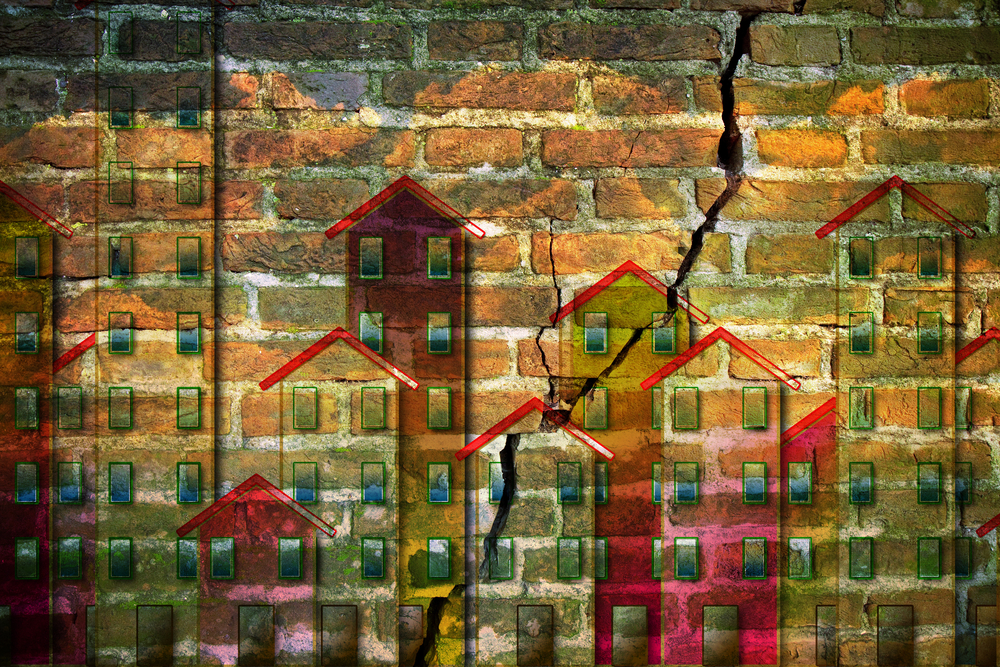Curb-appeal and a south-facing garden might be the features which attract you to a home, but checking out potential ground hazards should be your priority when making the final decision. Dr Tim Farewell of Terrafirma explains the home buying science which could save you a fortune
 Shocking pictures emerged in January of a house perched precariously close to the edge of a cliff in Slaithwaite, West Yorkshire following a landslide triggered by heavy rainfall brought by Storm Christoph.
Shocking pictures emerged in January of a house perched precariously close to the edge of a cliff in Slaithwaite, West Yorkshire following a landslide triggered by heavy rainfall brought by Storm Christoph.
This was in addition to another two landslides in Ventnor, Isle of Wight and Sneinton, Nottinghamshire, as well as asinkhole in Manchester that swallowed several homes, and a mineshaft ‘blowout’ in Skewen, Wales that caused significant flooding in the area.
But just how common are these events, and how likely are they to impact the average homeowner across the UK?
Ground hazards are not to be ignored
The fact is there is little awareness among homebuyers and homeowners of how property can be exposed to ground hazards, such as soil subsidence, mine collapse and sinkholes.
These risks can be dangerous and costly to deal with in the aftermath – and some, sadly, can lead to the complete destruction of a home.
Knowing which physical risks a property may be exposed to is not typically at the top of the list for most people looking for their dream home.
However, every year, homes are flooded, from fluvial, surface and coastal sources; properties are lost to coastal erosion; new homes are built in areas with slope instability; costly soil subsidence claims are raised; and historic mines cause subsidence and collapse.
Moreover, these hazards are likely to increase in frequency and severity over the next century in line with climate change.
The Climate Change Committee, the UK’s independent adviser on tackling climate change, predicts that if current global emission outputs remain constant, by 2050 we will see a 10% increase in UK heavy rainfall events, for example.
Apart from the obvious flooding risks, heavy rainfall can also trigger the formation of sinkholes as subsurface erosion and dissolution intensifies.
Similarly, frequent rainstorm events will also lead to a greater number of landslides – a particularly destructive ground risk with the potential to cause significant damage to property and infrastructure.
Coastal landslides are also triggered, with rising sea levels, stronger wave action and subsequent erosion of soft geology increasing the risk to many coastal properties.
How does this affect homeowners and homebuyers?
For individuals, a certain level of risk has always been accepted when buying a home – in fact, thousands of homes in high risk areas are bought and sold each year – and more properties are being built on ‘risky’ sites too.
Attitudes however are changing. In a move away from the laissez-faire attitude of the past, lenders are beginning to take account of how such ground risks affect homes and property.
Mining and climate-related risks are a growing concern for lenders, for example, and similarly physical risks, which have been long on the radars of insurers, are demanding ever more attention across both sectors.
As climate risk assessment filters through the regulatory processes of lenders, insurers and into other industries, taking account for climate-related ground hazards every step of the way seems more and more essential.
What can homeowners and prospective buyers do?
As climate change worsens and more ground instability events occur, such as those associated with Storm Christoph, it will become even more important for homebuyers to improve their knowledge and understanding of the full range of physical hazards that their current or future home could be exposed to.
While specific insurance specifications would likely be a condition of any mortgage offer, homeowners should make sure they have the correct insurance policies to cover hazards in their area.
For prospective homebuyers, the most important takeaway would be to buy a Ground Report for your prospective home, one that allows you to check a property’s exposure to all major ground risks such as subsidence, historic mining, coastal erosion and landslides.
Fundamentally, it’s always a good option for any buyer or homeowner to speak to specialists about the various ground risks their property could be exposed to, because every home will have its own set of unique circumstances and there is by no means a catch-all fix.
 Engaging the expertise of professionals skilled in ground risk assessment will enable prospective buyers to become more knowledgeable on the ground hazards that could impact their property both now and in the future, so they can make well-informed decisions.
Engaging the expertise of professionals skilled in ground risk assessment will enable prospective buyers to become more knowledgeable on the ground hazards that could impact their property both now and in the future, so they can make well-informed decisions.
Dr Tim Farewell is science and communications director at Terrafirma














